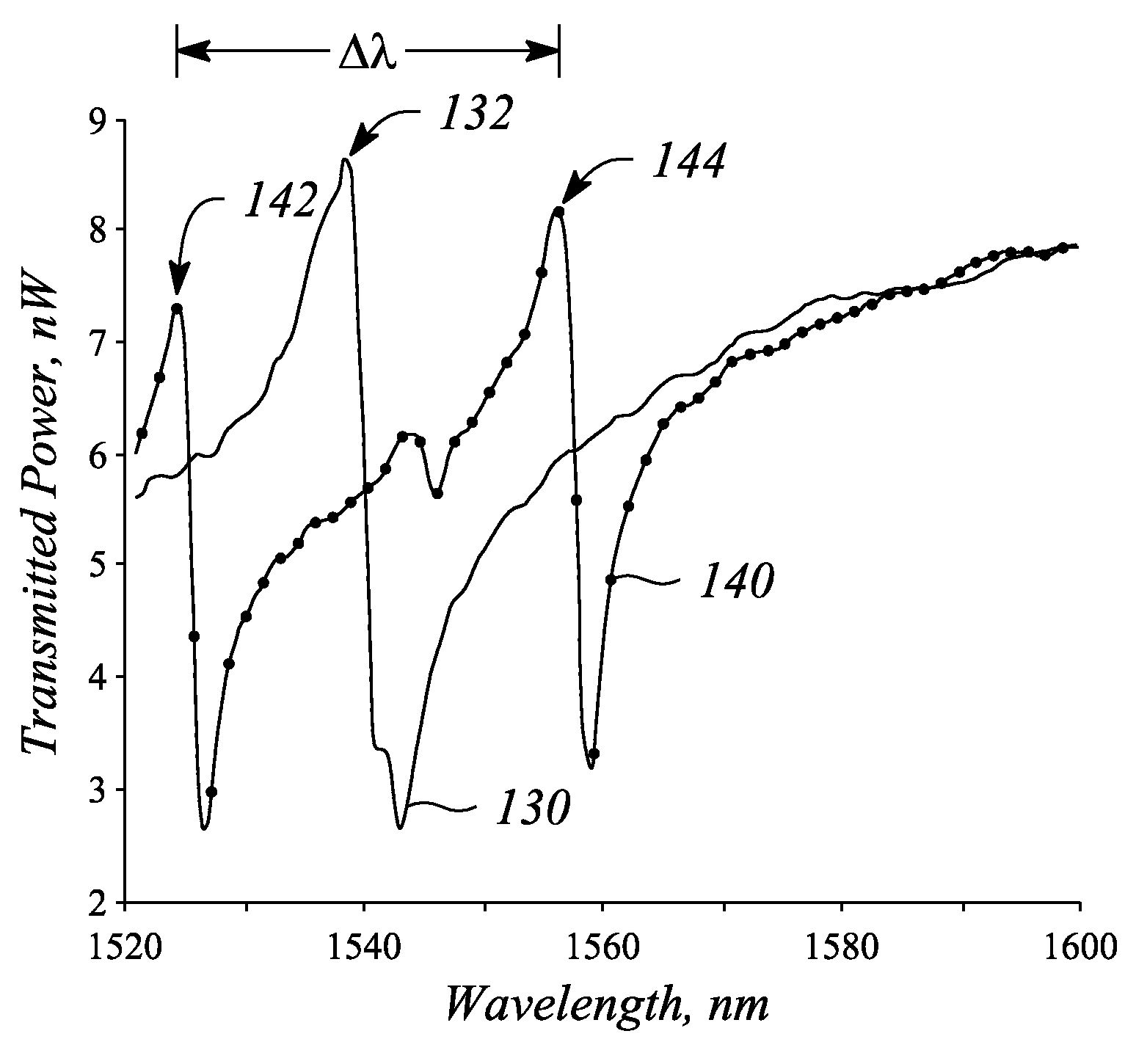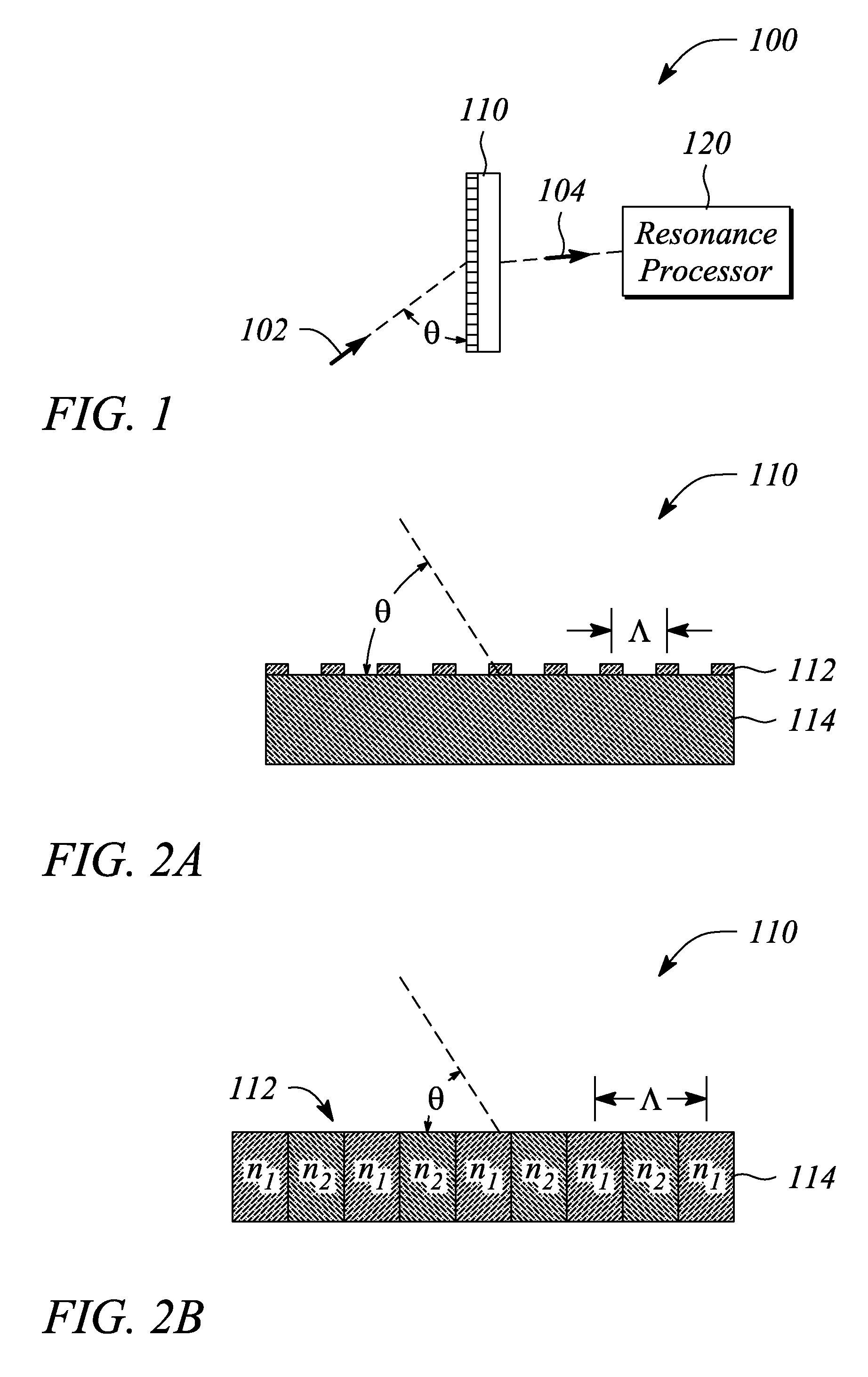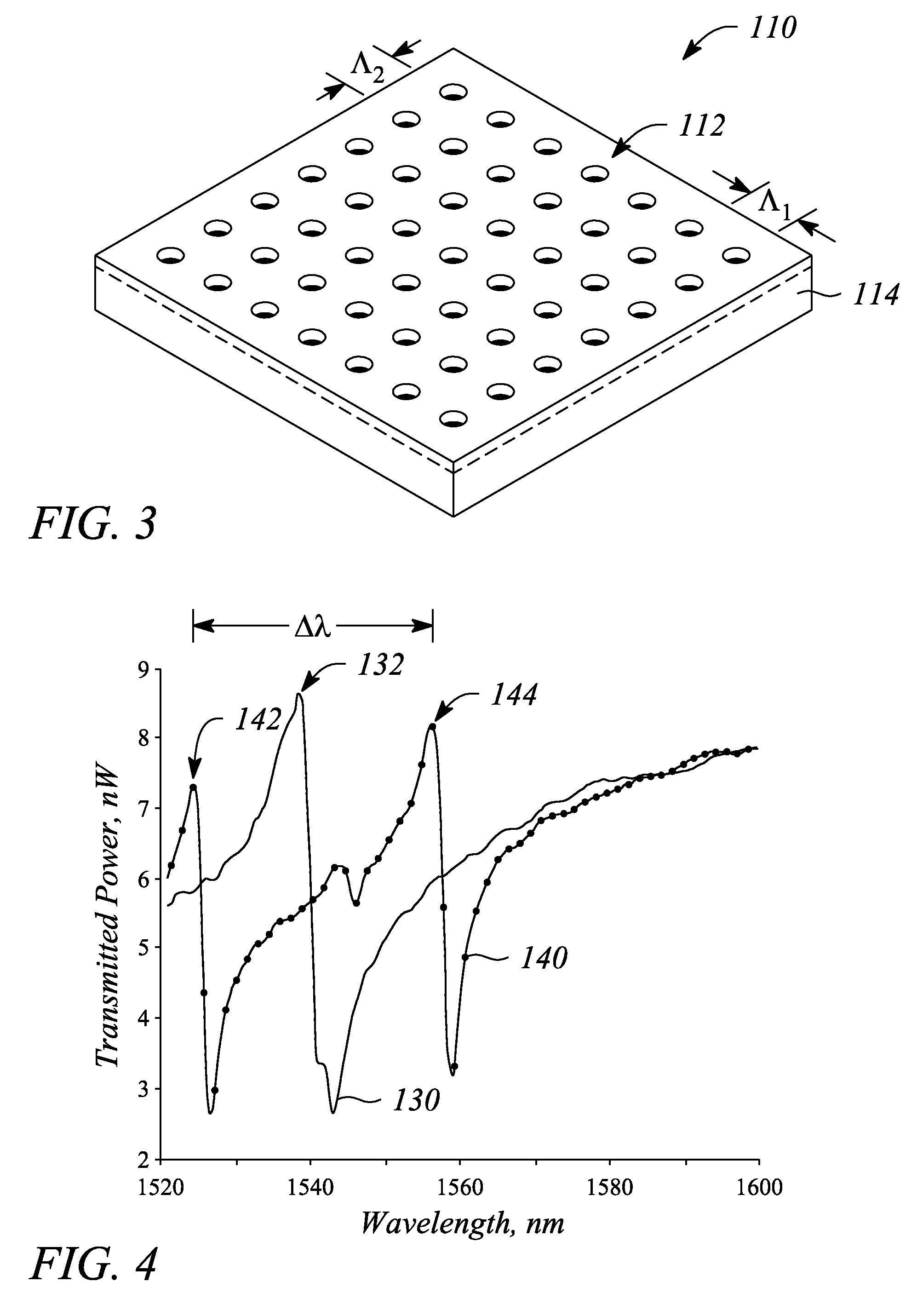Angle sensor, system and method employing guided-mode resonance
a guided-mode resonance and sensor technology, applied in the field of sensors, can solve the problems of deterioration and calibration drift of simple normal angle detectors based on corner reflectors, prohibitively expensive manufacture and deployment of mems devices,
- Summary
- Abstract
- Description
- Claims
- Application Information
AI Technical Summary
Benefits of technology
Problems solved by technology
Method used
Image
Examples
Embodiment Construction
[0021]Embodiments of the present invention facilitate one or both of determining an angle of incidence of a signal and determining an angular orientation of a planar surface relative to the incident signal. In particular, the planar surface is a surface of a guided-mode resonance (GMR) grating. A guided-mode resonance induced in the GMR grating by the signal is employed to determine the angle of incidence. The GMR-based angle determination embodiments of the present invention generally exhibit high sensitivity, high angular resolution and a large dynamic range. Moreover, the GMR-based angle determination embodiments are relatively unaffected by fluctuations in an intensity of the signal and one or both of may be relatively resilient to certain physical degradation of the planar surface and is capable of relatively high refresh rates (>1 MHz), for example. As such, GMR-based angle determination may be employed in a wide variety of operational environments and conditions as well as ma...
PUM
 Login to View More
Login to View More Abstract
Description
Claims
Application Information
 Login to View More
Login to View More - R&D
- Intellectual Property
- Life Sciences
- Materials
- Tech Scout
- Unparalleled Data Quality
- Higher Quality Content
- 60% Fewer Hallucinations
Browse by: Latest US Patents, China's latest patents, Technical Efficacy Thesaurus, Application Domain, Technology Topic, Popular Technical Reports.
© 2025 PatSnap. All rights reserved.Legal|Privacy policy|Modern Slavery Act Transparency Statement|Sitemap|About US| Contact US: help@patsnap.com



